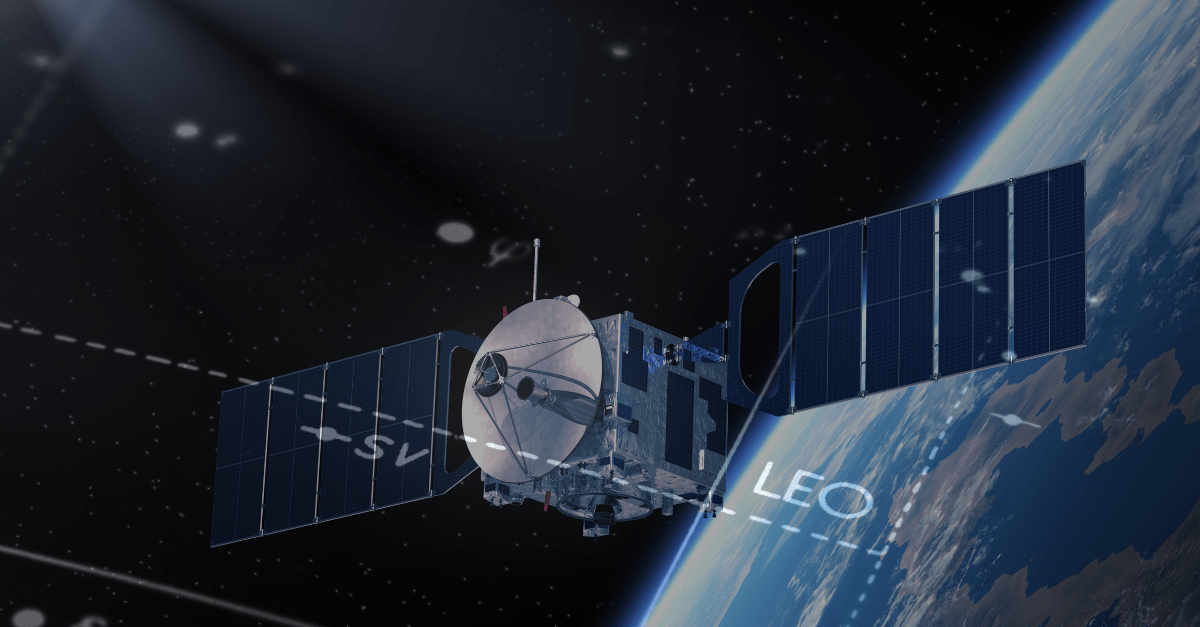


The aviation industry is abuzz with discussions following AIX 2024, particularly surrounding the anticipated rollout of OneWeb and Kuiper. With OneWeb expected to be available before Kuiper, but Kuiper promising even greater advancements, airlines face a pivotal decision: Should they wait for Kuiper, or go ahead with OneWeb?
It’s worth noting that we are not dealing with Starlink, given that its business model does not allow for a personalized portal or organized sales on board (order to seat & branded marketplace), which limits its integration flexibility for airlines.
– Proven Technology: Widely used in satellite communications with a track record of reliability.
– Global Coverage: OneWeb’s extensive satellite constellation promises near-global coverage, ensuring connectivity even over remote regions.
– Lower Latency: With its low Earth orbit (LEO) satellites, OneWeb can offer lower latency compared to traditional geostationary satellites.
– Higher Bandwidth: Offers higher bandwidth and faster data transfer rates, making it attractive for high-speed internet services.
– Future-Ready: Potential for faster speeds and better performance aligns with growing demand for data-intensive applications.
– Weather Interference: More susceptible to weather interference, but advancements in technology have mitigated many of these concerns.
To provide deeper insights, we spoke with Billy Vauls from LeoSat Solutions about the OneWeb versus Kuiper debate.
1. Thoughts on OneWeb’s Ku-band Technology vs. Kuiper’s Ka-band Technology:
“Both offer superior data speeds compared to GEO satellites and at a much lower cost. While Ka-band offers higher speeds, it suffers from atmospheric losses, which are mitigated at the antenna design stage.”
2. Key Technical Differences Between Ku-band and Ka-band:
“Ku offers lower speed than Ka but still much more than is needed. The Ku antenna is also slightly bigger and consumes more power than a Ka antenna.”
3. Importance of Future-Proofing In-Flight Connectivity:
“It’s very important to future-proof technology, especially as satellite operators launch new satellites with enhanced features. Antennas designed for today’s values might not be able to take advantage of greater speeds and bandwidths available in the future.”
4. Strategic Advice for Airlines:
“Ultimately, it will be a commercial decision on which network to choose for the best ROI. The Ku band is quite squeezed with TV and trunk communications, while Ka does not have such frequency restrictions. With more Ka operators (Kuiper and Telesat), there’s more opportunity to change networks as it is the same antenna in most cases.”
OneWeb is expected to launch sooner than Kuiper, potentially giving it a significant market advantage. Its Ku-band technology is proven and reliable, making it a viable option for airlines looking to enhance their in-flight connectivity (IFC) in the near term.
However, Billy Vauls of LeoSat Solutions cautions, “Sometimes early adoption can be a wrong call, though in this case only time will tell. Ku is OneWeb and Ka is Kuiper and Telesat, so one Ku operator and two Ka operators (three if you include Starlink).“
Moreover, Safran’s new HBCplus solution, a hybrid Ku/Ka band satellite connectivity system, is set to revolutionize in-flight connectivity by offering seamless integration for airlines.
According to RunwayGirlNetwork “Safran Ku ESA terminal for Airbus to ensure gate-to-gate IFC with 5G”, HBCplus is designed for both linefit and retrofit on Airbus aircraft, providing flexibility and enhanced connectivity options for airlines. This solution aligns perfectly with the early adoption of OneWeb’s technology, ensuring that airlines can offer the best possible service to their passengers without waiting for future advancements.
Safran’s HBCplus, integrating a Thales/Get SAT dual-beam Ku band electronicalley steered antenna (ESA), is designed to accommodate OneWeb’s LEO network from the outset.This ensures that airlines can achieve gate-to-gate connectivity, even in very hot climates, without the need for complex active cooling systems.
Ben Asmar, Safran Passenger Innovations’ Vice President of Products and Strategy, explained that the HBCplus system includes a 5G modem that supports connectivity when the Ku-band ESA overheats, thus maintaining seamless service from gate-to-gate.
Kuiper: The Promise of Tomorrow While Kuiper might be available later, its Ka-band technology holds the promise of significantly higher data rates and improved overall performance. Amazon’s Kuiper project is positioned to deliver several potential advantages, including higher bandwidth, future-ready technology, and unique benefits from integration with Amazon’s broader ecosystem.
Deciding whether to wait for Kuiper or proceed with OneWeb depends on several factors:
– Urgency of Implementation: Airlines needing immediate upgrades to their IFC might benefit from OneWeb’s earlier availability.
– Long-Term Strategy: If an airline’s strategy emphasizes future-proofing their IFC with the latest technology, waiting for Kuiper could be advantageous.
– Cost Considerations: The financial implications of switching from Ku-band to Ka-band technology should be carefully evaluated.
Choosing between OneWeb and Kuiper involves more than selecting Ku-band or Ka-band technologies; it requires aligning with an airline’s strategic goals and connectivity vision. OneWeb’s earlier availability and proven technology offer immediate benefits, while Kuiper promises superior performance and future readiness.
Innovations like Safran’s HBCplus, as highlighted by RunwayGirlNetwork, provide seamless integration and versatility for Airbus aircraft, making them an attractive option for enhancing connectivity without delay.
In the dynamic landscape of in-flight connectivity, airlines must balance immediate needs with future advancements. By leveraging the latest technologies and carefully evaluating their options, airlines can deliver exceptional connectivity services, enhancing passenger experience and fostering long-term loyalty.
TRAVELER’S MICRO-MOMENTS Home Capturing the Traveler's Micro-Moments 26 April 2022 microMoments, Technology, traveler Time Is No Longer Measured in Days,…
IFE TO THE RESCUE Home WHEN IFE COMES TO THE RESCUE OF FLIGHT ATTENDANTS! 25 June 2022 Digital Services, IFE,…
Digital AD: IVT-FREE Zone Home DIGITAL INFLIGHT ADVERTISING: AN IVT-FREE ZONE 20 May 2022 Advertising, IVTFREE, Technology In late 2015,…